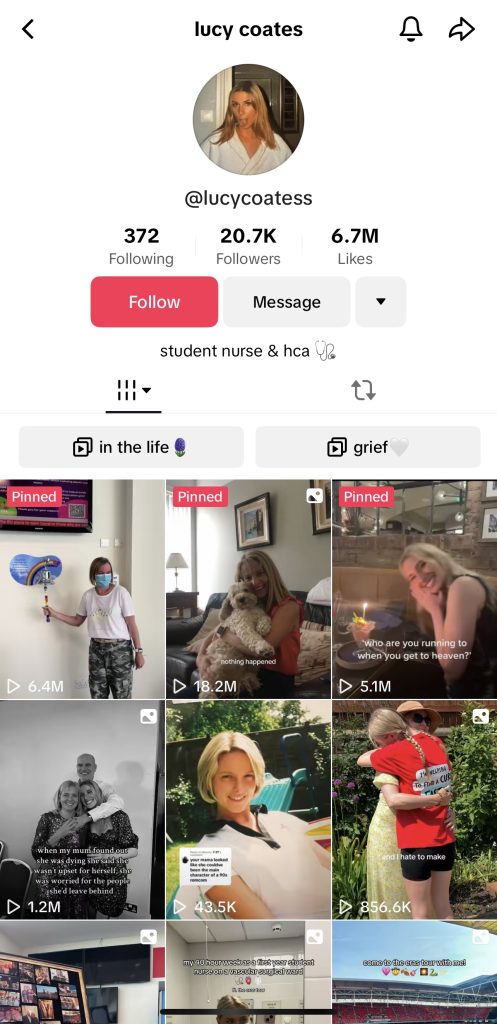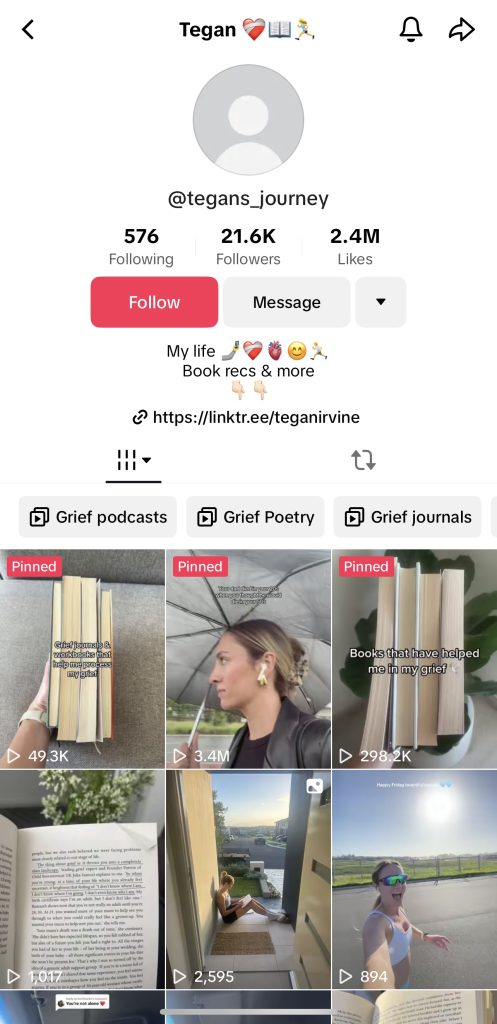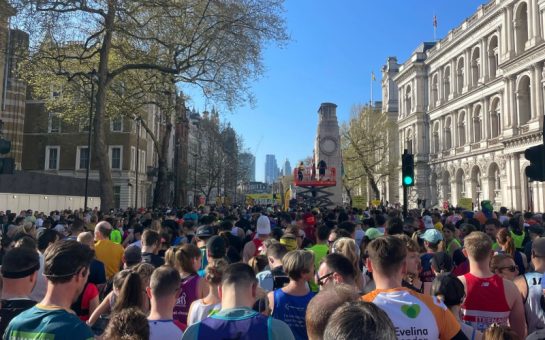On a platform dominated by viral dance challenges and life hacks, a raw and unexpected movement called GriefTok has emerged.
With more than 1.4 billion views for #grief and 40 million views for #grieftok, this burgeoning community provides a lifeline for those navigating life after loss.
Videos under related hashtags, like #griefjourney with 338 million views, feature everything from anecdotes about therapy to reenactments of grief’s unpredictable nature.
Creators share treasured memories, provide advice, and show the often messy and non-linear path of healing.
And the rise of GriefTok coincides with a significant cultural shift.
According to Google Trends, searches for terms such as “grief” and “bereavement” have steadily increased since 2004.
This reflects a growing reliance on online spaces to seek solace, share experiences, and understand the complexities of loss.
Interest over time in Google Trends is measured relative to the peak popularity for the term within the given region and time frame.
A value of 100 represents the peak of interest, while a value of 50 means the term is half as popular.
As the chart of search interest shows, there has been a substantial increase in the volume of grief-related searches, with searches for “grief” increasing from 14 in January 2004 to 100 in January 2024 – the highest point of popularity measured since tracking began.
For “bereavement” the numbers are similarly telling, as the term has risen from 49 in January 2004 to 100 in January 2024.
The sharp rise in grief-related searches, particularly in 2020, aligns with the societal impact of the COVID-19 pandemic, which brought an unprecedented level of loss and mourning to the forefront.
As people turn to Google for answers, platforms like TikTok are filling the gap, offering a space to both process and share personal loss.
This surge aligns closely with the growing prominence of social media platforms like TikTok, which have become a vital space for people to express and process their grief in real time.
According to a report by the UK’s Bereavement Commission, 39% of bereaved individuals struggle to receive adequate support from friends or family, while 74% of those with high vulnerability do not access formal bereavement services.
In this context, platforms like TikTok serve as an essential outlet for shared healing.
For 24-year-old student nurse Lucy Coates, her journey with grief started in February 2021 when her mother was diagnosed with an incurable brain tumour and given just 12-18 months to live.
She started to post about her grief on TikTok in January 2022, and her videos have since amassed more than 6.1 million likes and 20.8k followers.

She said: “I’ve always been more inclined toward creative outlets, like making TikToks and doing creative writing, rather than talking about my feelings directly.
“It simply began as a way for me to express feelings I wasn’t sure how else to put into words.
“We became a community of motherless daughters, we still check up on each other.
“It’s a really special community obviously one no one wants to be in, but everyone is incredibly loving, caring and understanding.”
The idea of visibility in grief and the power of shared experiences is explored by Megan Devine, author of It’s OK That You’re Not OK, who wrote: “When you become visible in your grief, it’s like a portal opens, a doorway into acceptability and openness.
“When you start talking about your loss, it’s like there’s suddenly this permission, and we think, oh, thank goodness, we’re talking about grief now.”
Tegan Irvine, another GriefTok creator, had her life turned upside down by a phone call she received while travelling through Europe with friends.
Midway through a sailing trip, her mother contacted her to tell her that her father had collapsed on a beach, suffered a seizure, and had been taken to intensive care.
Doctors had discovered a brain tumour, and her mother had urged her to return home immediately if she wanted the chance to say goodbye.
Tegan, who has documented her grief journey on TikTok, now has more than 2.4 million likes on her videos and 21.6k followers, and she also uses #grieftok #griefjourney and #griefandloss in her video captions.

She said: “I wish I had come across GriefTok when my dad first passed away because it is wonderful to know that you’re not alone.
“As a society, we suck at talking about grief and being open because it is very uncomfortable.
“I think that’s why it’s important to have pages like mine on social media to help foster conversations and sharing your story.”
The increasing prevalence of grief-related searches online, coupled with the growth of GriefTok, reflects a cultural shift towards vulnerability and connection.
For those in mourning, GriefTok offers not just a space for individual expression, but also a collective experience, and a reminder that no one has to grieve alone.
Creators like Lucy and Tegan, by turning their pain into purpose, have fostered a community that empowers others to embrace their grief openly and authentically.
The healing journey is often long and winding, but on TikTok, many have found a place where they can process their grief together, one video at a time.





